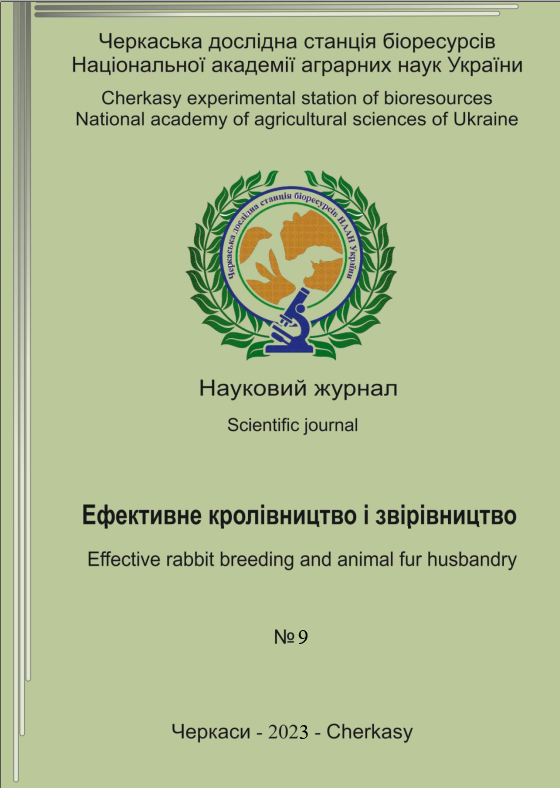ASSESS THE POTENTIAL OF USING ELECTROPHYSICAL, CHEMICAL AND FEED FACTORS FOR EMISSION REDUCTION OF POLLUTANTS FROM THE KRILLCHATTO INTO THE ATMOSPHERE
DOI:
https://doi.org/10.37617/2708-0617.2023.9.60-77Keywords:
pollutants, greenhouse gases, small rabbit breeding facilities, ultraviolet bactericidal, ozone, humic acids, daily emission coefficientsAbstract
The relevance of the work is determined by the need to determine the coefficients of
the daily emission of pollutants (PO) from small rabbit breeding facilities. The aim of the
work was to evaluate the potential of using bactericidal ultraviolet light and low-
concentration ozone (UVB+O3) in the working area of the rabbit house and humic acid
(Hа) feed additive to reduce the emission of pollutants into the outdoor air. Bibliographic,
physical, chemical, microbiological, Rbiometric and analytical research methods were used to fulfill the tasks. The research was carried out using rabbits of the Poltava silver
breed on the farm of the Cherkasy RSB of the National Academy of Sciences. The
experimental work was carried out in a brick room equipped with a supply and exhaust
ventilation system with a mechanical drive. Animals were kept in galvanized cage
batteries on a continuous concrete floor. The density of planting rabbits was 12.0-12.7
heads/m2. Studies have established the probable effect of action (UVB+O3) in the working
area of the rabbit house and feed additive Hk on reducing the emission rates of carbon
dioxide, ammonia and fine dust into the outside air. An exception was the indicator of
daily methane emissions from the rabbit hutch, which increased to 62.6%. The rate of
daily methane emission probably increased by 14.4-34.2%, also, when rabbits were fed
the feed additive Ha. Treatment of indoor air (UVB+O3) in the spring, summer and
autumn periods of the year probably ensured a decrease in the total microbial number of
CFU by 43.5-47.1% (p ≤ 0.05-0.01), calculated per 1m3 of indoor air the air of a rabbit
warren. A significant effect of action (UVB+O3) and feed additive Ha on the established
balance of intestinal microbial systems in rabbits was shown. As a result, the activation of
the methanogenic systems of microorganisms in experimental animals was manifested.
Average annual coefficients of daily emission of eleven pollutants and greenhouse gases
emitted into the atmosphere from the premises of a small rabbit breeding facility were
determined. Unlike Ukraine, a common agricultural policy is applied in the territory of
the European Union (EU) countries, thanks to which farmers receive financial support.
The goal of the policy is to preserve agricultural production as a source of basic food and
reduce its negative impact on the landscape and environment.


